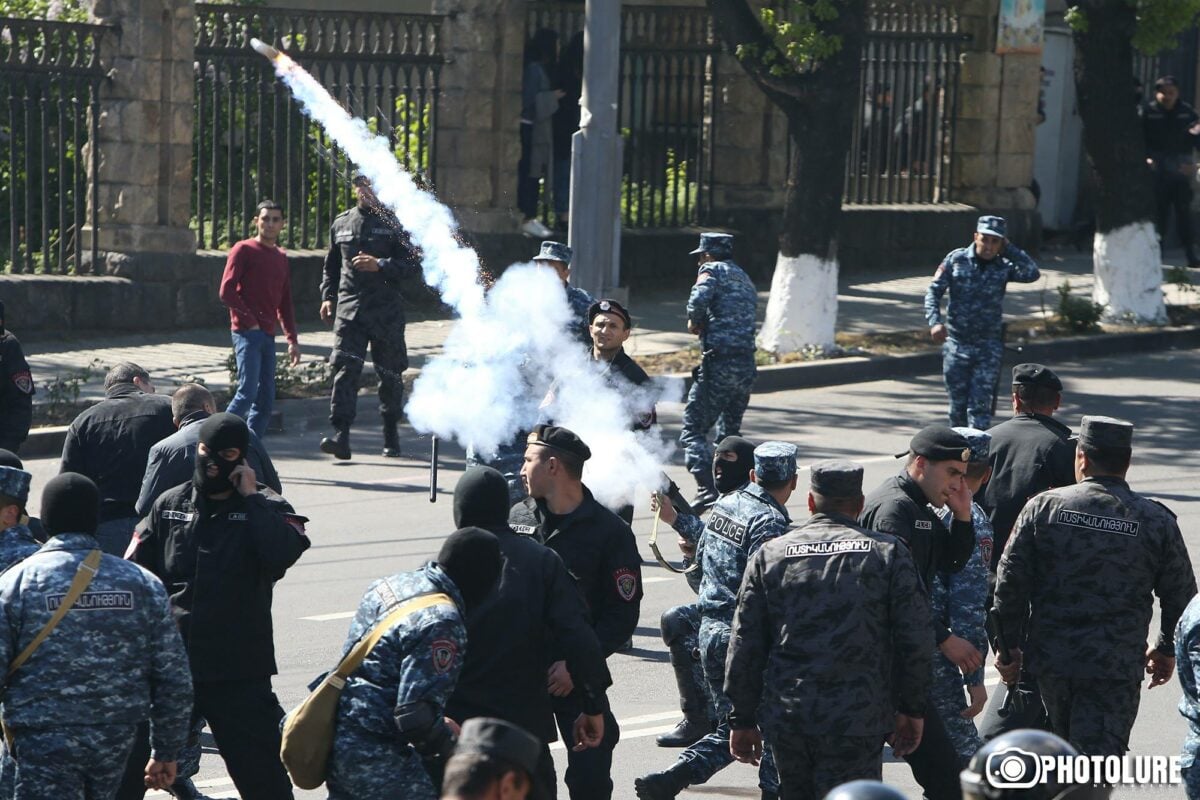YSU Journalism Faculty Associate Professor Davit Alaverdyan advises against inexperienced journalists covering demonstrations, rallies, and acts of disobedience. He believes that such public events require journalistic experience and relevant knowledge.
Commenting on the events that occurred near the National Assembly on June 12, during which ten journalists were injured in clashes between supporters of the “Tavush for the Motherland” movement demanding the resignation of the Prime Minister and the police, Davit Alaverdyan said that one should always consider the possibility of such a scenario, including the application of extraordinary measures.
He reminded, “The editorial team does not send a journalist to cover events to be harmed, injured, or even killed.” Therefore, media representatives should prioritize ensuring their safety so that they can fully perform their work.
In a conversation with Media.am, Davit Alaverdyan offered advice on how to prepare for the coverage of such events and what to do at the scene:
-It’s advisable to wear comfortable, sporty shoes and clothing that allows for unrestricted movement, which will not impede quick movement in case of an emergency. This is not a formal event where you need to wear evening dresses, high heels, and makeup.
-When covering public events, journalists should wear urban-style light jackets with “PRESS” written in large letters. These jackets, typically dark blue, help police identify journalists, especially in tense situations where they may have difficulty distinguishing them from regular participants. Journalists can wear hats with the word “PRESS” if the jackets are unavailable.
-It is essential for journalists to wear a badge displaying their last name and the media they represent, helping the police to identify them and avoid mistakenly arresting them during events.
-Given the potential for police to use force and extraordinary measures during rallies or protests, it’s important to be physically prepared for such events. In tense situations, journalists should leave the area, position themselves in a safe place, and follow events from a distance rather than the center. This is to avoid health problems that could complicate and slow the process of leaving the scene.
–Based on recent events, it’s clear that journalists often find themselves caught between the police and the participants during tense situations. As the sides begin throwing objects and clashing, journalists can become targets if they remain in the middle; it’s better to observe the events from a safe distance rather than being in the midst of the action.
Effective coverage does not require being in the front and risking injuries. Everything remains visible and audible from a distance.
I recommend that operators use a camera stick to maintain a safe distance from potential collisions and stay clear of the middle of the action. This advice also applies to photojournalists, who can take advantage of Zoom capabilities to record events from a safe distance.
-I recommend carrying a backpack with water, a small medicine box containing painkillers, and ointments for treating wounds. You might also want to have a handkerchief wet with water in case of exposure to tear gas. You can then use it to cover your eyes and nose as a temporary filter, allowing you to leave the scene.
-Always think about possible retreat and escape routes beforehand.
-Follow police instructions. Typically, the police will warn about the potential use of force before taking action and request that journalists vacate the area. If no such warning is issued, promptly assess the situation and depart using a pre-determined escape route.
-Activate the function on your mobile phone to send an email to multiple recipients with one command. The email should include your location and the help you need for urgent assistance.
David Alaverdyan points out that editorial offices often fail to recognize the dangers of such events, and as a result, they often send unprepared journalists to cover them. “Every organization should have one or two well-trained reporters who can cover such events while ensuring their own safety.”
He emphasizes that if the rallies continue for more than one day, and if a large number of police forces have arrived at the site of the action, and if the parties make drastic statements, it means that there is a threat of using special measures and force.
Tigranuhi Martirosyan







